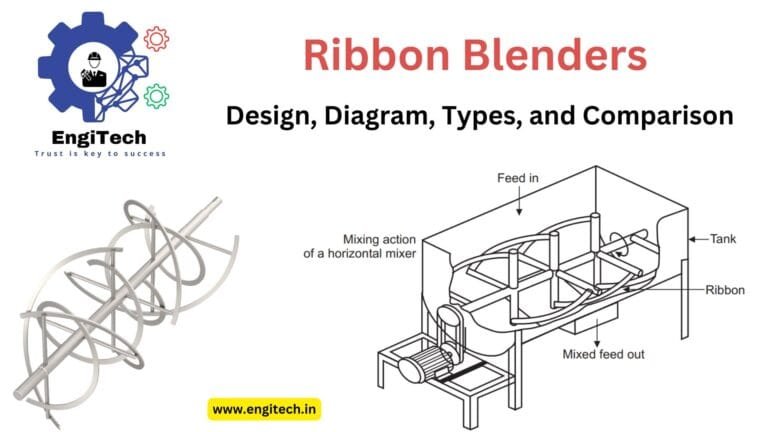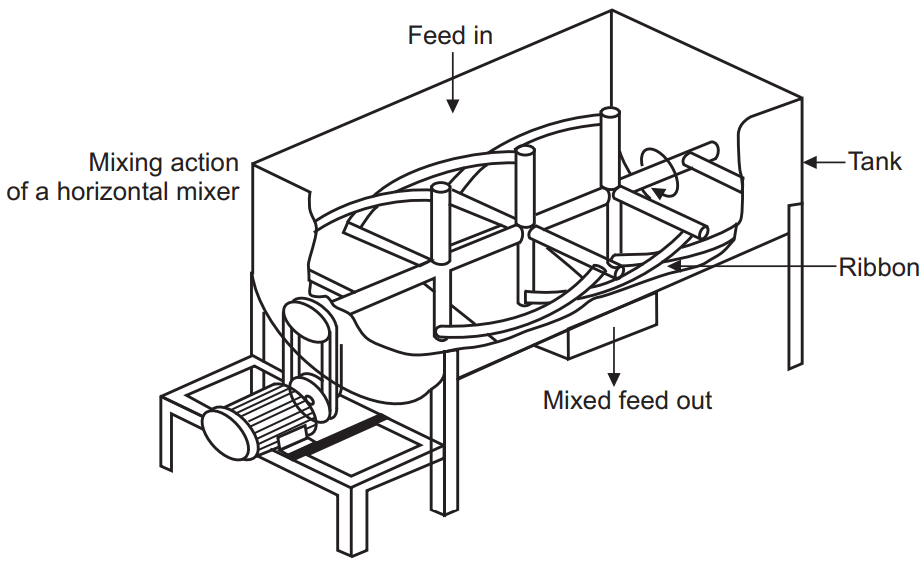
Ribbon blenders are a staple in industries that handle powder mixing, granulation, and other processes requiring efficient blending. They offer versatility, efficiency, and scalability, making them indispensable in sectors such as food processing, pharmaceuticals, and chemicals.
In this comprehensive guide, you’ll learn about ribbon blenders’ design, explore their diagram, understand the types available, and dive into a comparison of different models. By the end, you’ll gain actionable insights to help you choose the right ribbon blender for your application.
Table of Contents
What Are Ribbon Blenders?
Ribbon blenders are industrial machines designed for homogeneous mixing of powders, granules, and pastes. Their unique design consists of a U-shaped trough and a double helical ribbon agitator. The agitator’s inner and outer ribbons rotate to move materials both radially and laterally, ensuring thorough mixing in minimal time.
Key Features
- High efficiency: Rapid blending with minimal energy consumption.
- Customizable: Available in various sizes and configurations.
- Versatile: Suitable for dry and wet blending applications.
Design of Ribbon Blenders
The design of a ribbon blender is pivotal in ensuring efficient and uniform mixing. Let’s break down the core components:
1. Trough
A U-shaped trough made of stainless steel or carbon steel serves as the mixing chamber. The material and coating depend on the application requirements, such as food-grade standards or chemical resistance.
2. Agitator
The agitator comprises two ribbons:
- Outer Ribbon: Moves material toward the center.
- Inner Ribbon: Pushes material outward.
This counterflow motion ensures a consistent mix.
3. Drive System
The blender operates through a motor and gearbox combination. Variable speed drives allow for adjustments to suit the material’s viscosity and blending needs.
4. Discharge Mechanism
Typically located at the bottom of the trough, discharge valves enable easy removal of the mixed material. Options include slide gates, butterfly valves, or pneumatic mechanisms.
Ribbon Blender Diagram Explained
The diagram below illustrates the fundamental components and working of a ribbon blender:

Components Highlighted in the Diagram:
- Mixing Trough
- Inner and Outer Ribbons
- Shaft and Bearings
- Motor and Gearbox
- Discharge Valve
This visual representation aids in understanding how materials move and interact within the blender.
Types of Ribbon Blenders
Ribbon blenders come in various types, each designed for specific industrial needs.
1. Horizontal Ribbon Blenders
- Structure: Standard U-shaped trough with horizontal agitators.
- Best For: Powder mixing, granules, and lightweight materials.
- Advantages: Efficient mixing, easy discharge.
2. Vertical Ribbon Blenders
- Structure: Vertical design with a helical ribbon agitator.
- Best For: Small batch processing and blending viscous materials.
- Advantages: Compact design, minimal floor space usage.
3. Continuous Ribbon Blenders
- Structure: Designed for continuous feed and discharge.
- Best For: Large-scale production.
- Advantages: Consistent output, ideal for high-volume operations.
Comparison of Ribbon Blenders
| Feature | Horizontal Blenders | Vertical Blenders | Continuous Blenders |
|---|---|---|---|
| Mixing Efficiency | High | Moderate | High |
| Batch Size Flexibility | Large | Small | Continuous |
| Space Requirement | Moderate | Low | High |
| Maintenance | Easy | Moderate | Challenging |
This table provides a quick reference for selecting the blender that aligns with your operational needs.
Applications of Ribbon Blenders
Ribbon blenders serve a variety of industries:
- Food Processing: Mixing spices, powders, and batters.
- Pharmaceuticals: Homogenizing powders and granules.
- Chemical Industry: Blending chemicals, fertilizers, and pesticides.
- Cosmetics: Preparing creams, powders, and gels.
How to Choose the Right Ribbon Blender
Selecting the right ribbon blender depends on several factors:
1. Material Characteristics
Understand the properties of the material you intend to mix—density, viscosity, and particle size.
2. Batch Size
Determine whether you need a batch or continuous blender based on your production volume.
3. Construction Material
Choose a material compatible with your product (e.g., stainless steel for food-grade applications).
4. Customization Options
Consider features like variable speed drives, heating/cooling jackets, or specialized coatings.
Conclusion
Ribbon blenders are versatile and efficient machines that cater to diverse industrial needs. Whether you’re in the food industry, pharmaceuticals, or chemical processing, understanding the design, exploring the diagram, identifying the types, and performing a comparison will empower you to make an informed decision.
Explore EngiTech for more resources, expert insights, and updates on industrial blending technologies. Stay ahead in your industry with the latest innovations!